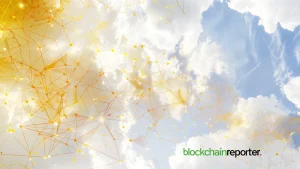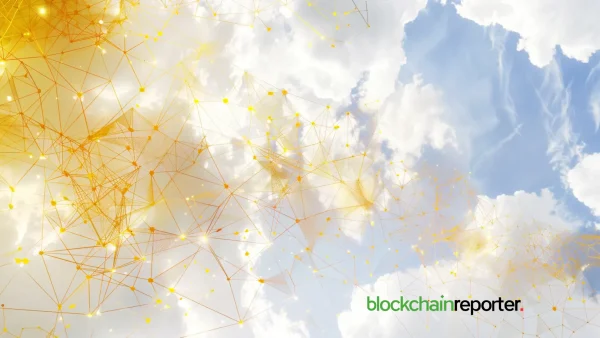
In this exclusive interview with BlockchainReporter, Geoff Richards, the Europe Ecosystem Lead at Ontology, sheds light on Ontology’s unique approach to decentralized identity and data solutions. As a leading blockchain project, Ontology aims to revolutionize the Web3 landscape by providing trust, privacy, and security through innovative technologies and strategic partnerships.
Geoff explains how Ontology remains committed to building an inclusive and interoperable future for decentralized applications (dApps). By inviting developers and projects worldwide to join its ecosystem and leverage the Ontology EVM, Ontology aims to propel the blockchain industry towards enhanced trust, privacy, and security in the Web3 space. From scalability and interoperability to regulatory-compliant identity frameworks, Ontology is paving the way for the future of dApps. Let’s dive into the details!
Q1: Ontology aims to bring trust, privacy, and security to Web3 through decentralized identity and data solutions. Could you explain how Ontology’s approach differs from other projects in the blockchain space that also focus on identity solutions?
Ontology‘s unique approach to decentralized identity and data solutions centers around the principle of self-sovereign identity. Unlike many projects, Ontology provides a dual-token infrastructure and a distributed trust collaboration platform. It focuses on bridging real-world institutions with the decentralized world, enabling businesses and individuals to create their own trust systems and distribute these across different networks, applications, and industries.
Q2: The Ontology blockchain provides high-speed and low-cost transactions. How does Ontology achieve this scalability while maintaining security and decentralization? Are there any unique consensus mechanisms or technologies employed?
Ontology’s high-speed, low-cost transactions are primarily enabled by our unique dual token system, which features ONT and ONG. ONT is the governance token used for staking and participating in the consensus process, while ONG is the utility token used to pay for transactions and services on the network. This division of roles between the two tokens prevents the erosion of voting power for those who actively use the network, thereby maintaining a balance of power and participation.
The Ontology blockchain employs a unique consensus mechanism known as VBFT, which is a combination of Verifiable Random Function (VRF), Byzantine Fault Tolerance (BFT), and Proof-of-Stake (PoS) mechanisms. This innovative consensus mechanism ensures that the network achieves a strong balance between scalability, security, and decentralization. Through VBFT, Ontology is able to process thousands of transactions per second, far outpacing traditional financial systems and many other blockchain networks.
In addition, the introduction of the Ontology EVM has further improved scalability and compatibility, enabling seamless integration with Ethereum-based applications and other EVM-compatible chains. This is all part of Ontology’s commitment to create an inclusive and interoperable ecosystem that can support a wide range of applications and use cases.
Q3: Interoperability is a key aspect of blockchain ecosystems. How does Ontology ensure interoperability with other blockchains and what role does it play in facilitating seamless data and asset transfers between different networks?
Ontology is deeply committed to breaking down development barriers and fostering a truly interoperable blockchain ecosystem. Through support for multiple virtual machines, including the Ontology EVM, and various smart contract languages, Ontology provides developers with the flexibility to work in the environments they’re most comfortable with. This strategy not only simplifies the development process but also encourages more creative and innovative solutions within the ecosystem.
To further facilitate seamless data and asset transfers, Ontology has several interoperability bridges, including the Ontology Bridge, Poly Network, Multichain, and cBridge. These bridges ensure that assets and data can flow freely across different networks, promoting a more interconnected and efficient blockchain ecosystem.
Most recently, Ontology incubated the Goshen Network, a Layer 2 optimistic roll-up solution, to further enhance its multi-chain strategy. By integrating such advanced solutions, Ontology is not only reinforcing its commitment to interoperability but also paving the way for limitless possibilities in the blockchain space.
Q4: Ontology places emphasis on regulatory-compliant digital identity solutions. Can you elaborate on the features and capabilities of Ontology’s identity framework, and how it helps users and enterprises navigate regulatory requirements while maintaining privacy and security?
Ontology’s decentralized identity framework, ONT ID, is a robust tool specifically designed to navigate regulatory requirements while ensuring privacy and security. Based on the W3C’s recommendations for decentralized identifiers and verifiable credentials, it empowers users with a self-sovereign identity, linking to wallet addresses across various ecosystems for enhanced security and interoperability. Its reputation scoring system, which assigns scores based on transactional data, fosters trust and reliability within the decentralized ecosystem.
ONT ID’s chain-agnostic capability allows seamless operation across multiple blockchain ecosystems, adapting readily to the diverse needs of Web3 projects. Its white labeling service further enables projects to leverage ONT ID’s advanced features while maintaining their own brand identity. This flexibility, combined with its robust security measures, makes it a versatile solution for a range of use cases.
For instance, Daimler employed ONT ID to establish trust among different mobility service providers, creating a personalized, data-secure driving experience. Similarly, music platform ROCKI uses ONT ID to prevent artist impersonation and authenticate NFTs. In the DeFi and DAO sectors, ONT ID enhances security and engagement by segmenting users based on their reputation, calculated using both on-chain and off-chain data.
Q5: The Ethereum Virtual Machine (EVM) compatibility of Ontology allows for easy integration with Ethereum. What benefits does this compatibility bring to developers and users, and how does Ontology plan to expand interoperability beyond Ethereum in the future?
Ontology’s compatibility with the Ethereum Virtual Machine (EVM) opens the door to a wide array of benefits for both developers and users. Developers can tap into the established community and resources of the Ethereum network, using familiar tools and languages to build applications that are interoperable with both Ontology and Ethereum. This not only reduces the barrier to entry but also accelerates the development process.
For users, this compatibility means access to a broader range of decentralized applications (dApps) and services. They can enjoy the high-speed, low-cost transactions that Ontology provides, while also leveraging Ethereum’s extensive dApp ecosystem. This unique fusion optimizes user experience, providing the best of both worlds.
It’s important to note that while EVM compatibility is a significant step, Ontology’s vision extends beyond Ethereum. As previously mentioned, ONT ID, our decentralized identity framework, is chain-agnostic, meaning it can operate seamlessly across multiple blockchain ecosystems. This ensures that Ontology’s solutions remain versatile and adaptable, ready to meet the needs of a rapidly evolving Web3 landscape.
Q6: Ontology has a strong focus on enterprise adoption. Could you share some examples of real-world use cases where Ontology’s decentralized identity and data solutions have been successfully implemented by enterprises and the impact they have had on their operations?
Ontology’s decentralized identity and data solutions have been successfully integrated into several real-world applications, driving trust, efficiency, and seamless experiences. For instance, bloXmove, a global decentralized mobility alliance, leverages Ontology’s technology to enhance transactional efficiency and security across companies. Similarly, the Orange Protocol, built atop ONT ID, uses Ontology’s infrastructure to aggregate and assess on-chain reputation and identity, providing valuable insights into user behavior and preferences.
Additionally, the Daimler mobility project utilized ONT ID to build trust among different service providers, creating a personalized driving experience while safeguarding private data. These examples underscore Ontology’s potential in facilitating trusted, efficient operations across a wide range of industries and use cases.
Q7: Looking ahead, what are some exciting upcoming milestones or developments in the Ontology roadmap? Are there any specific partnerships or collaborations that you’re particularly excited about, which will contribute to the growth and adoption of Ontology’s solutions?
Ontology has recently launched a $10 million EVM Development Fund, underlining our commitment to nurture innovation and attract new projects to our ecosystem. This significant investment aims to stimulate creativity and technical advancement within the Ontology EVM, promoting the development of next-generation dApps and other key solutions.
In addition to our financial commitment to innovation, Ontology continues to build and expand its technical infrastructure. Our recent partnership with iZUMi Finance has introduced DEX support to the Ontology EVM, enhancing its utility and reach. Furthermore, we’re working on a major revamp of the staking infrastructure, including the introduction of liquid staking, which promises to significantly enhance the composability of our ecosystem.
Ontology’s multi-chain initiative is ongoing and we’re consistently seeking new ways to extend our reach and functionality. As we forge ahead, we’re keen on exploring and cultivating future collaborations and partnerships to further advance trust, privacy, and security in the Web3 space.
We invite developers and projects from all around the world to apply to our EVM Development Fund and join us in building the future of decentralized applications on the Ontology EVM. Together, we can propel the blockchain industry toward a more integrated and efficient future.









